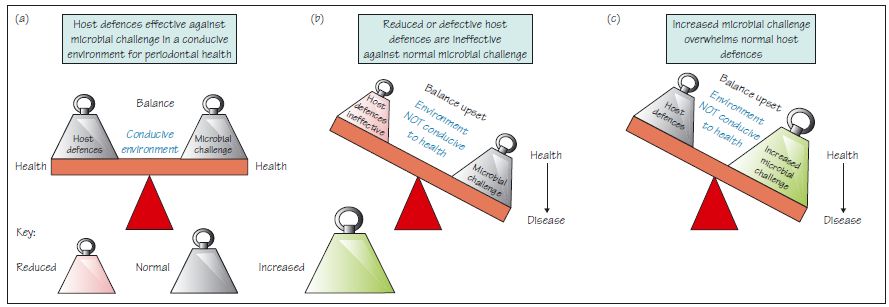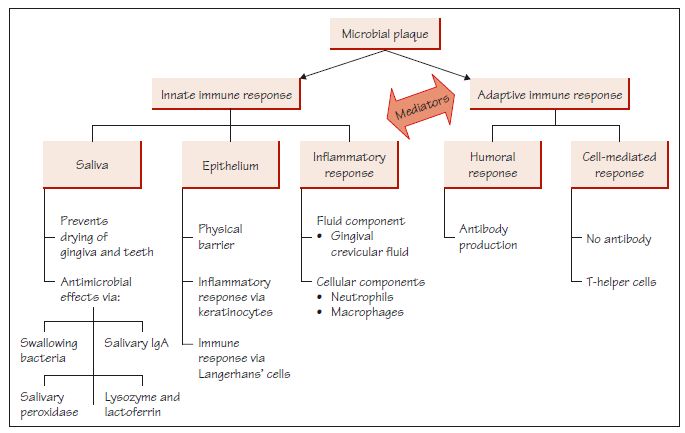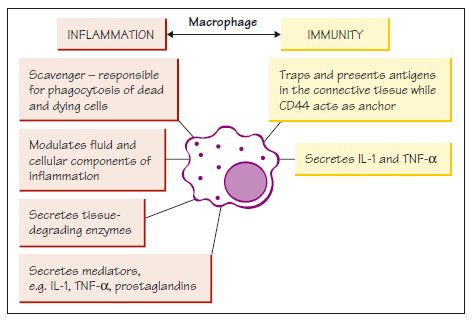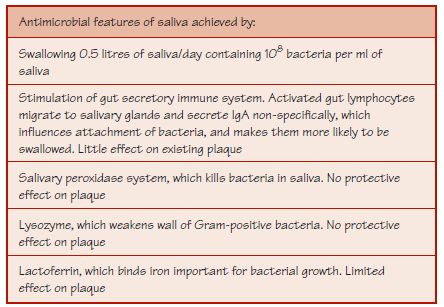7
Host defences
Figure 7.1 Concept of balance between host defences, microbial challenge and environment. (a) Balance and periodontal health. (b) Host defences have a defect or are ineffective against microbial challenge, tipping the balance to periodontal destruction. (c) Microbial challenge overwhelms the host defences leading to an upset balance and periodontal destruction – this may relate to the environment not being conducive and/or changes in quality, quantity or virulence of microorganisms.

Figure 7.2 Host defences against microbial plaque.

Figure 7.3 The role of neutrophils in phagocytosis or the killing of microorganisms.

Figure 7.4 The role of macrophages in inflammation and immunity.

Figure 7.5 Some of the antimicrobial features of saliva.

The host defences are like a two-edged sword, since although they are meant to be protective, bystander damage to the periodontal tissues may also occur. A delicate balance exists between the host defences, microbial challenge and ecological environment within the periodontal tissues, such that any upset can tip the balance and lead to periodontal destruction (Fig. 7.1).
Microbial plaque is the primary aetiological agent in the development of periodontal diseases, however patient susceptibility is strongly influenced by the patient’s host defences (Fig. 7.2), as well as genetic factors. Plaque in the gingival crevice initiates an inflammatory response. Innate immunity is inbuilt and requires no prior experience or exposure. Adaptive immunity is stimulus specific, and uses recognition, memory and binding to help in the elimination of the infecting agents, either by the humoral immune response or the cell-mediated response. Mediators link inflammation and immunity.
Key components of the host defences
Inflammatory response
Stay updated, free dental videos. Join our Telegram channel

VIDEdental - Online dental courses


